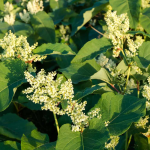The issue of waste management, specifically with regards to single-use plastics, is a burning topic. In the UK, the convenience food sector is one of the largest consumers of these materials. However, it needs not be this way. With a little effort and a shift in thinking, we can significantly reduce the mounting piles of plastic waste. This article explores the ways we can reduce our reliance on single-use plastics, particularly in the realm of convenience food packaging.
Alternatives to Single-Use Plastics in Food Packaging
The most practical step towards reducing the use of single-use plastics in food packaging is to replace them with more sustainable alternatives. The trick is to find materials that can perform the same function as plastics without causing environmental harm.
In parallel : How to Develop Digital Literacy Skills Among UK’s Senior Population?
Bioplastics: The Future of Food Packaging?
One of the most promising alternatives to conventional plastics is bioplastics. These are a type of plastic derived from renewable sources, such as vegetable oils, corn starch, or microbes. They offer the same functionality as traditional plastics but are biodegradable and have a lower carbon footprint.
There’s a wide variety of bioplastics available, each with its unique properties. For instance, Polylactic acid (PLA) based bioplastics are great for use in cold food packaging because they are clear and resist moisture well. However, they are not suitable for hot food as they soften at high temperatures.
Topic to read : What’s the Latest in Human-Robot Collaboration in UK’s Manufacturing Sector?
Paper-Based Packaging: A Tried and True Solution
Another reliable alternative to single-use plastics is paper-based packaging. Made from recycled materials, paper packaging is not only environmentally friendly but also cost-effective. It’s versatile, allowing for a range of shapes and sizes to fit various food products.
The challenge with paper is its limited resistance to moisture and grease, which makes it less suitable for some types of food. However, developments in coatings and treatments are overcoming these constraints, making paper a viable option for a broader range of products.
The Role of Recycling in Reducing Plastic Waste
Recycling is an essential part of the solution to the plastic waste problem. However, to achieve meaningful results, we need to make recycling easy and convenient for everyone.
Changing Consumer Habits: The Key to Successful Recycling
For recycling to be effective, it’s essential that consumers participate actively. This means separating out recyclable materials from other waste and disposing of them in the correct way.
To encourage this, packaging needs to be clearly labelled to show whether it can be recycled and how to do it. Consumers also need to be educated about the importance of recycling and the difference it can make.
Innovations in Recycling Technology: The Answer to Plastic Waste?
Advances in recycling technology are making it easier to recycle more types of plastic. This includes innovations that allow for the separation of different types of plastics, something that was previously difficult and costly.
For instance, PET (Polyethylene Terephthalate) plastic, commonly used in drink bottles, can now be recycled back into food-grade packaging. This kind of closed-loop recycling system can significantly reduce the need for new plastic production.
Reusable Packaging: A Sustainable Approach
An effective way to reduce single-use plastics is by promoting the use of reusable packaging. This not only decreases the amount of plastic waste but also reduces the resources required to produce new packaging materials.
Towards a Reuse Culture: The Importance of Consumer Participation
The success of reusable packaging is largely dependent on consumers’ willingness to adopt a reuse culture. This involves shifting from a throw-away mentality to one where items are valued and reused until the end of their useful life.
Retailers can incentivise this by offering discounts for customers who bring their reusable containers. Moreover, products can be designed in a way that encourages reuse, for instance by making containers attractive and durable.
The Role of Legislation in Promoting Reuse
Government regulations can play a crucial role in promoting the use of reusable packaging. For instance, regulations that require retailers to charge for single-use bags have proven effective in reducing their usage.
Similar regulations could be imposed on single-use food packaging, making it more expensive and thus encouraging consumers and producers to switch to reusable alternatives.
Innovation in Food Packaging Design
Design plays a critical role in the transition towards more sustainable food packaging. By rethinking the way products are packaged, we can minimise waste and make recycling or reuse easier.
Design for Recycling: A Key Principle of Sustainable Packaging
Design for recycling involves creating packaging that is easy to recycle. This can mean using a single type of material rather than a mixture, making it easier to separate and recycle. It can also involve designing packaging so that it can be easily disassembled, allowing different parts to be recycled separately.
Design for Reuse: Maximising the Lifespan of Packaging
Similarly, design for reuse involves creating packaging that can be reused multiple times before it needs to be discarded. This can mean using durable materials and creating designs that are functional and attractive, so consumers are more likely to reuse them.
The transition towards more sustainable food packaging is a complex task that requires collaboration between consumers, businesses, and the government. However, with the right strategies and technologies in place, we can significantly reduce our reliance on single-use plastics and move towards a more sustainable future.
The Circular Economy and Intelligent Packaging
The circular economy is a model that encourages continual use of resources and aims to eliminate waste. It’s a concept that could help tackle the issue of single-use plastics in food packaging.
The Power of Intelligent Packaging
Intelligent packaging is one strategy that aligns with the principles of the circular economy. It refers to packaging that has added functionality beyond containment and protection of the product. This could include indicators for freshness, time-temperature tracking, or even interactive elements that improve the consumer experience.
By adding value to the packaging, consumers are more likely to reuse these packages rather than simply disposing of them. It also encourages companies to design their packaging with reuse in mind, helping to reduce plastic waste and move towards a more sustainable packaging model.
Biobased Feedstocks: A Renewable Approach
Another aspect of the circular economy is the use of bio-based feedstocks in packaging production. These materials come from renewable resources such as plants, making them a more sustainable option than fossil-based plastics.
In addition to being renewable, bio-based materials often have a lower carbon footprint than traditional plastics. This helps to reduce the environmental impact of food packaging and supports the transition towards a more sustainable, circular economy.
The Impact of Single-Use Plastics on Food Waste and Plastic Pollution
Reducing our reliance on single-use plastics in food packaging doesn’t just help to address the problem of plastic pollution. It can also help to tackle the issue of food waste, which is another significant environmental challenge.
The Unseen Cost of Food Waste
Food waste is a major issue in the UK, with millions of tonnes of food discarded each year. Much of this waste occurs because food goes bad before it can be eaten. By improving food packaging – making it more intelligent and reusable – we can help to extend the shelf life of food and reduce the amount of food waste.
Moreover, by reducing our reliance on single-use plastics in food packaging, we can cut down on the amount of packaging waste that ends up in landfill. This not only reduces plastic pollution but also contributes to a more efficient use of resources.
Worse or Better: The Trade-Offs of Alternatives to Single-Use Plastics
While alternatives to single-use plastic packaging can offer environmental benefits, it’s crucial to weigh up the trade-offs. Some alternatives may require more energy to produce or may not be as easily recyclable as plastics.
This doesn’t mean we should abandon the search for alternatives to single-use plastic packaging. Instead, we need to fully understand the life cycle impacts of different packaging products, so that we can make informed decisions that support a more sustainable trajectory.
Conclusion: Towards a Plastic-Free Future
The challenge of reducing single-use plastics in the UK’s convenience food packaging is a complex one. It requires a multi-faceted approach that includes the development of sustainable alternatives, changes in consumer behaviour, innovations in recycling technology, and a shift towards a circular economy.
Whilst we must be careful not to trade one environmental problem for another, the potential benefits of reducing our reliance on single-use plastics are clear. A move towards more sustainable, intelligent packaging can help to reduce plastic waste, tackle food waste, and contribute to a more efficient and sustainable use of resources.
It won’t be an easy journey, but with the right strategies and technologies in place, we can set a course towards a plastic-free future. The result will be a healthier planet for us all.
















